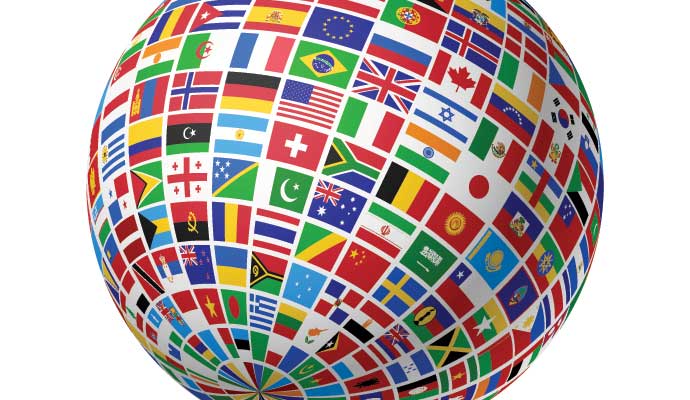Is the Arctic the Next Emerging Market?
The earth’s northernmost regions are rich in resources. The challenge will be accessing them sustainably.
(originally published by Booz & Company)As the ice recedes in the Arctic, talk of industry entering the region to take advantage of its economic opportunities is on the rise. The territories contain significant natural resources, including conventional hydrocarbons (natural gas, condensate, and oil), metals, fish, high-value minerals such as diamonds and rare earths, and fresh water. If the region’s waters become more navigable, viable new trans-Arctic shipping routes between the North Atlantic and Bering Strait could emerge. Even if such routes are available only in the warmer months, they could bring substantial logistics savings over routes through the Suez and Panama Canals, offering cost benefits for industries and consumers, and global environmental benefits from reduced fuel consumption and associated greenhouse gas emissions. It’s no wonder the world’s interest in the Arctic is so keen.
But many of those who wish to develop the region overlook the primary truth about it: It is an emerging market. To be sure, as one of the last of the true wildernesses remaining in our world, the Arctic is a uniquely challenging environment. But it is not empty. It is home to some 4 million people comprising a broad range of cultures—and an economy worth about US$230 billion annually. The land is inhabited by more than 40 ethnic groups, such as the Sámi of northern Scandinavia, the Evenki of Russia, and the Inuit of Canada. In Canada, Greenland, and the United States, in particular, local control by aboriginal communities and regional business corporations can be substantial. Most of the Arctic region is governed under existing national structures and international frameworks similar to those in other areas of the world. It’s not the northernmost equivalent of the next frontier, waiting to be conquered by big business or governments desperate for resources.
Adding to the complexity, the interested parties don’t yet possess the technology or know-how to access the Arctic’s resources in a sustainable way. The increased commercialization of a pristine region raises everyone’s worst fears. For example, the impact on the local environment of an oil spill or of the northward shift of the world’s fishing fleets remains unknown. And current levels of investment won’t begin to resolve these and other uncertainties. Thus, developing the Arctic, though ripe with opportunity, is also fraught with complexity. The desire for resource wealth must be tempered by respect for local populations and customs, and for the land itself.
Governments and businesses should start by addressing the following five key challenges. Although this is not a complete list, it brings together current, convergent dialogues and debates about the region.
1. Protection of the environment and its people. The effects of climate change in the Arctic have globally relevant repercussions: witness rising sea levels resulting from ice loss on the Greenland ice sheet and altered weather patterns caused by the perturbation of jet streams. Such consequences also put local populations at great risk. Their livelihood and well-being are directly linked to the land, but their control over its preservation is uneven, ranging from substantial (in North America and Greenland) to limited (in Fennoscandia and Russia). Long-term changes in the Arctic are driven primarily by external factors, such as world commodity prices and rising greenhouse gas emissions. Therefore, future environmental, economic, and social developments in the region depend critically on policy and business decisions made elsewhere at the national and international levels, such as progress in climate change negotiations. At present, strong disparities exist among national policies on economic development, aboriginal rights, climate change, and environmental protection. Because the region is small and ecologically fragile, such inequalities heighten the risk to all stakeholders. For example, strong protections to prevent oil spills could be implemented in some but not all Arctic regions, leading to impact outside the protected areas. Agreeing on common policies and legislation across the Arctic countries is thus crucial, as is the adoption of sustainable operating standards by industry participants.
2. Insufficient investment for infrastructure. Except for certain areas of Norway and Western Russia, the Arctic region remains vastly underserved by transportation, ports, and other critical infrastructure. This deficiency will continue to limit access and hinder development. Increasing the attractiveness of the Arctic for investment in infrastructure is tied to the need for stable, transparent political, governance, and judicial systems and a consistent, clearly defined regulatory regime. The main issue here is that without clear rules for how to operate, multinationals will hesitate to engage with the region—and if they don’t, there is no need for infrastructure. Establishing clear criteria for obtaining a license to operate is of particular importance to the oil, gas, and mining industries. At present, clarity exists for onshore operations, but not for operations performed offshore, which increases risks to both project success and the environment. Addressing this inconsistency would create a more favorable investment climate.
3. Navigation of dangerous waters. As the extent of summer sea ice in the Arctic Ocean continues to lessen, the likelihood is mounting of increased commercial traffic in one of the most remote, dangerous oceans on Earth. Besides ordinary open-water ships, there will be more moderately strengthened ice breakers (such as those used currently in the Baltic). These are treacherous waters, and ice conditions can change rapidly, capturing unsuitable vessels in the ice, or even worse, cracking their hulls—resulting in loss of life and serious environmental damage. The prospect of common open-water ships, which make up the vast majority of the global fleet, entering the Arctic Ocean, Northern Sea Route, and Northwest Passage heightens the urgency for a comprehensive International Maritime Organization (IMO) regulatory framework. Such a framework would ensure adequate vessel safety standards, navigation control systems, environmental protections, and search-and-rescue capability in this uniquely challenging polar ecosystem. Establishing clear rules for the classification of ships permitted to enter these waters in different seasons and under various ice conditions is critical.
4. Unresolved governance disagreements. The vast majority of Arctic territories and coastal waters are uncontested and under the jurisdiction of the eight Arctic states: Russia, Finland, Norway, Sweden, Iceland, Denmark (Greenland), Canada, and the United States. Further offshore, much of the central Arctic Ocean has been or will likely be apportioned among Russia, Norway, Canada, Greenland, and the U.S. under the provisions of Article 76 of the United Nations Convention on the Law of the Sea (UNCLOS). Importantly, a decades-long overlapping claim in the Barents Sea (between Russia and Norway) was recently settled. However, some lingering disputes create an atmosphere of uncertainty for both policymakers and business interests. For example, the United States has not yet ratified UNCLOS, and it also has overlapping claims with Canada to a small triangle of coastal waters in the Beaufort Sea. Canada considers the Northwest Passage to be a domestic waterway, whereas the U.S. and other countries consider it to be an international strait. Other barriers include a dispute over Hans Island (claimed by both Canada and Greenland) and a “doughnut hole” of high seas between the coastal waters of Russia and Alaska that is excessively fished by international trawlers. Resolution of these disagreements would further remove tensions among the Arctic states and facilitate implementation of environmental protection and economic development in contested areas.
5. A lack of research. Natural resource development, sustainable economic growth, ecosystem protection, and comprehension of the impact of climate change in the Arctic all have one thing in common—a pressing need for science. Despite coming under intense global interest, the Arctic remains one of the most logistically difficult environments in the world for scientific research, and is thus one of the least studied. A few small locales have received relatively high levels of attention and funding (for example, Arctic Alaska, the Greenland ice sheet, and ocean-floor bathymetric mapping to support UNCLOS Article 76 claims), but the vast majority of Arctic landscapes, oceans, ecosystems, and climate have received little field study. Even basic seafloor mapping and a complete set of navigation charts remain incomplete. The region’s oceans and landscapes are critically important for global migrations of whales, birds, and fish, yet there is little understanding of how economic development and climate change will affect these populations. Similarly, the effects of thawing permafrost on global methane gas emissions, and of shrinking Arctic snow, sea ice, and glaciers on global sea levels, weather patterns, and fisheries, remain unclear. This lack of basic scientific understanding and the paucity of data pose a challenge for business and environmental interests alike. To enable informed decision making in the region, there is a pressing need for new scientific observations—including long-term monitoring and mapping programs, improved computer modeling, and development of new technologies ranging from autonomous sampling platforms to satellite observing systems—by both public and private actors.
The Arctic region will require novel, cooperative solutions to overcome these challenges to sustainable economic development. The time to act is now: The resources locked in the Arctic could shift the balance of energy supply and demand in the world in important ways. ![]()
Reprint No. 00205
Author profiles:
- Per-Ola Karlsson is a senior partner with Booz & Company’s organization, change, and leadership practice, and is based in Stockholm.
- Laurence C. Smith is the chair of geography and professor of earth and space sciences at the University of California at Los Angeles, and author of The World in 2050: Four Forces Shaping Civilization’s Northern Future (2nd ed., Plume, 2011).
- This article is adapted from “Demystifying the Arctic by Stating the Truths,” a report by the World Economic Forum’s Global Agenda Council on the Arctic, of which the authors are members (and Karlsson is chair).




